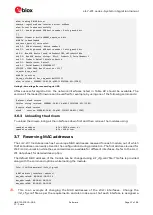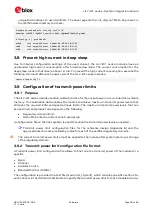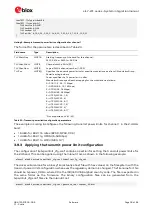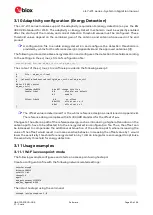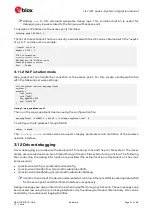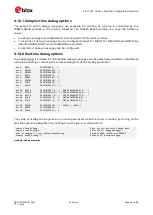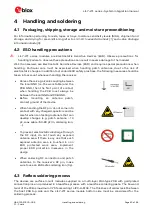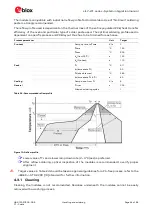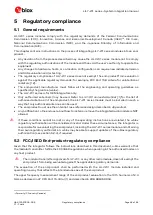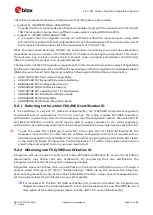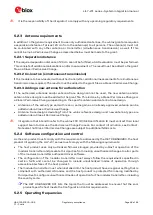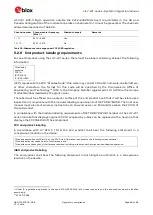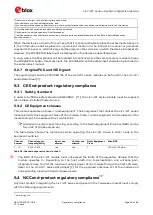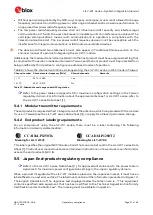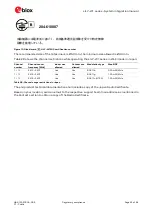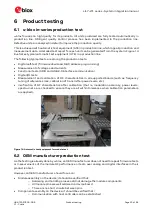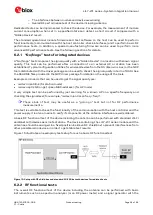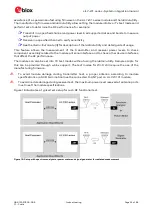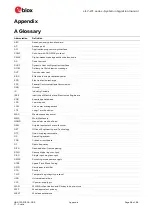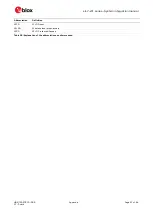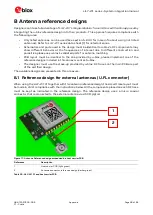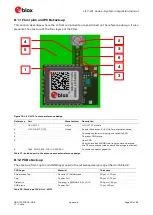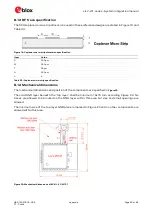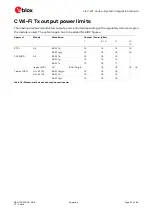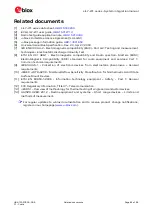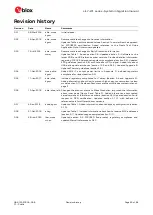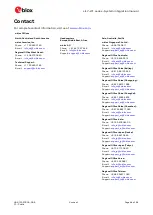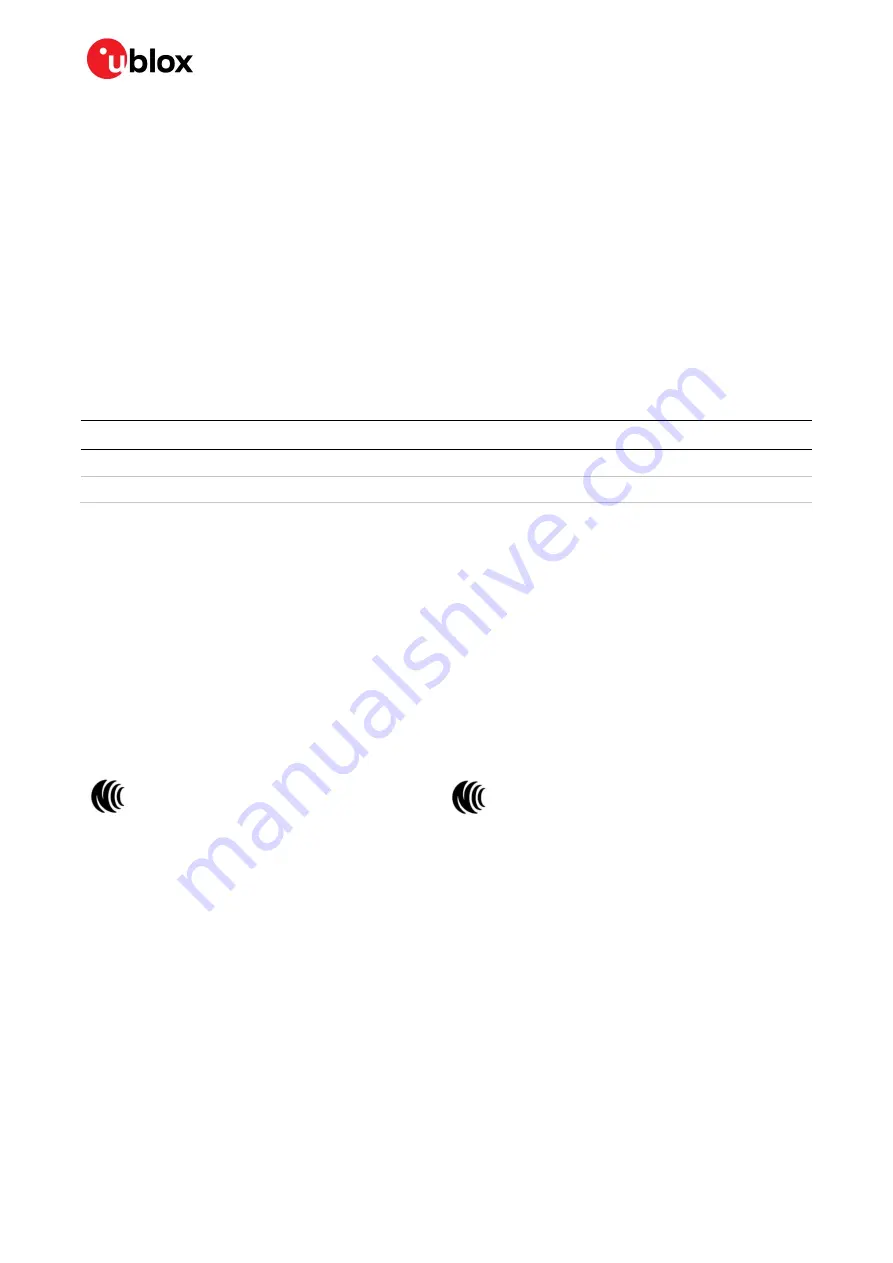
LILY-W1 series - System integration manual
UBX-15027600 - R09
Regulatory compliance
Page 51 of 64
C1 - Public
•
Without permission granted by the NCC, any company, enterprise, or user is not allowed to change
frequency, enhance transmitting power or alter original characteristic as well as performance to
an approved low power radio-frequency devices.
•
The low power radio-frequency devices shall not influence aircraft security and interfere legal
communications; if found, the user shall cease immediately until no interference is achieved. The
said legal communications means radio communications is operated in compliance with the
Telecommunications Act. The low power radio-frequency devices must be susceptible with the
interference from legal communications or ISM radio wave radiated devices.
⚠
The above-mentioned two statements must also appear in Traditional-Chinese version on the
end-user manual of a product integrating the LILY-W1 module.
Additionally, the modular transmitter installed into the host product must have a regional setting that
is compliant with operation modes authorized in Taiwan and the host product must be protected from
being modified by third parties to configure unauthorized modes of operation.
Table 27 shows the channel restrictions while operating the LILY-W1 series in Wi-Fi mode in Taiwan:
Channel number Channel center frequency [MHz]
Allowed channels
Remarks
1 – 11
2412 – 2462
Yes
12 – 13
2467 – 2472
No
Table 27: Allowed channel usage under NCC regulation
☞
Refer to the power tables in Appendix C for maximum configuration settings in the Taiwan
regulatory domain. For information about the approved antennas for LILY-W1 series, refer to
the LILY-W1 series Data sheet [1].
5.4.1
Modular transmitter requirements
The end product is required either to integrate one of the antennas, which is approved with the module
for use in Taiwan (see the LILY-W1 series Data sheet [1]), or apply for a Class II permissive change.
5.4.2
End product labeling requirements
For an end-product using the LILY-W1 series, there must be a label containing the following
information in a clearly visible location:
CCAI16LP1250T6
CCAI16LP1280T2
Marking for LILY-W131
Marking for LILY-W132
This label specifies the original NCC "Grantee Code" that can also be found in the LILY-W1 series Data
Sheet [1]. The host user manual must also contain clear instructions on how end users can find and/or
access the end product’s NCC ID.
5.5
Japan End-product regulatory compliance
☞
Refer to the LILY-W1 series Data Sheet [1]
for approved antennas and to the power table in
Appendix C for maximum power configuration settings in the Japan regulatory domain.
When a product integrated with a LILY-W1 module is placed on the Japanese market, it must have a
label affixed on an exterior surface. The label must contain all the information presented in Figure 13.
The English translation of the Japanese text displayed below the Giteki mark is - “This equipment
contains specified radio equipment that has been certified to the Technical Regulation Conformity
Certification under the Radio Law“. The marking must be visible for inspection.

